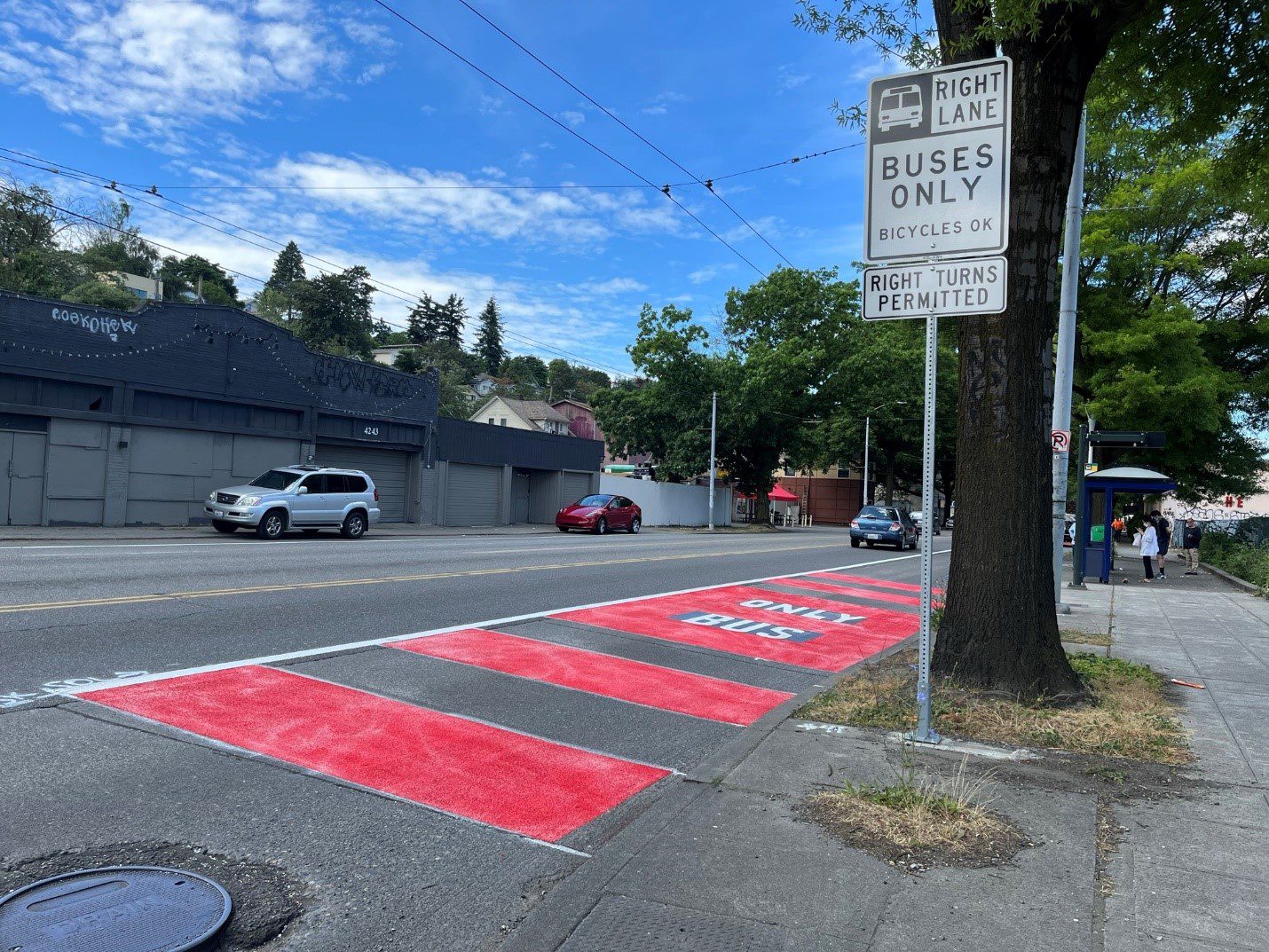 The Metro route 7 bus travels in the existing bus-only lane on Rainier Ave S at S Alaska St. Photo courtesy of King County Metro.
The Metro route 7 bus travels in the existing bus-only lane on Rainier Ave S at S Alaska St. Photo courtesy of King County Metro. Blog stats: 500 words | 3-minute read
We’re piloting new street treatments to discourage people driving personal vehicles in bus-only lanes.
We’re starting the pilot effort in Rainier Valley as detailed below, but could implement additional treatment options at more Seattle bus-only lane locations in the future.
You can check out this blog post to learn more about next steps for extending bus-only lanes on Rainier Ave S.
Pilot project details:
We’ve identified possible street treatments to pilot on sections of bus-only lanes and will start with the elements detailed below in Rainier Valley.
These upcoming treatments include:
- Installing raised street markings across the bus-only lane.
- Acting like a ‘rumble strip,’ the vibration and sound of the markings will alert people driving when they are driving in a lane intended for buses.
- Installing additional signs nearby will also reinforce appropriate use for people driving.

We’ll observe traffic for up to six months and see if there is a reduction in speeding and misuse of the bus-only lane. To do this, we’ll put tubes across the street to track speeds and check if the vehicle in the lane is a bus or not. In some places, we might also use cameras, but not for giving out citations. We are also working on guidelines for installing automated enforcement and would like to try engineering treatments first.
Another potential future measure would be adding speed cushions to make it less appealing for people driving personal vehicles to inappropriately use the bus-only lane, as they would not be able to easily travel faster than the speed limit. We’d follow the same observation process as outlined above to determine their success.
Our findings to date indicate that, when used in the right locations, bus-only lanes support good bus service. However, when not occupied by a bus, people driving sometimes misuse them to move around traffic. Not only is weaving in and out of traffic unsafe, but it can disrupt bus reliability and make walking and rolling along the sidewalk uncomfortable.
Ultimately, we hope people driving will allow themselves enough travel time so these investments become unnecessary, bus service is not impacted, and everyone arrives at their destination safely.
Next steps:
- The types of treatments installed may vary at different locations depending on the need and specific street conditions.
- Please stay tuned for additional updates as we move forward with implementation.
- Thank you for your interest and efforts to support safe, reliable, sustainable travel in Seattle.
